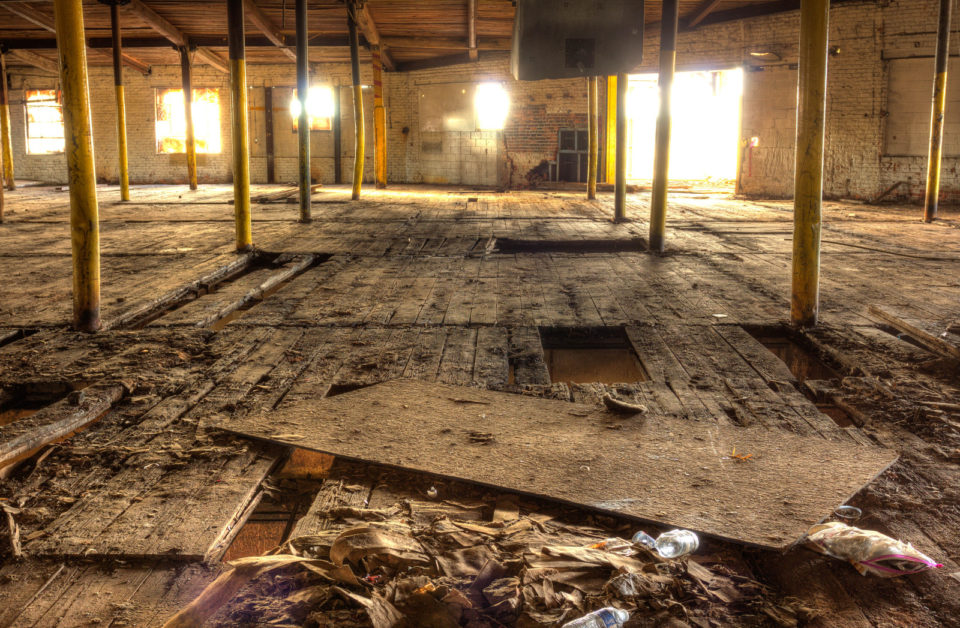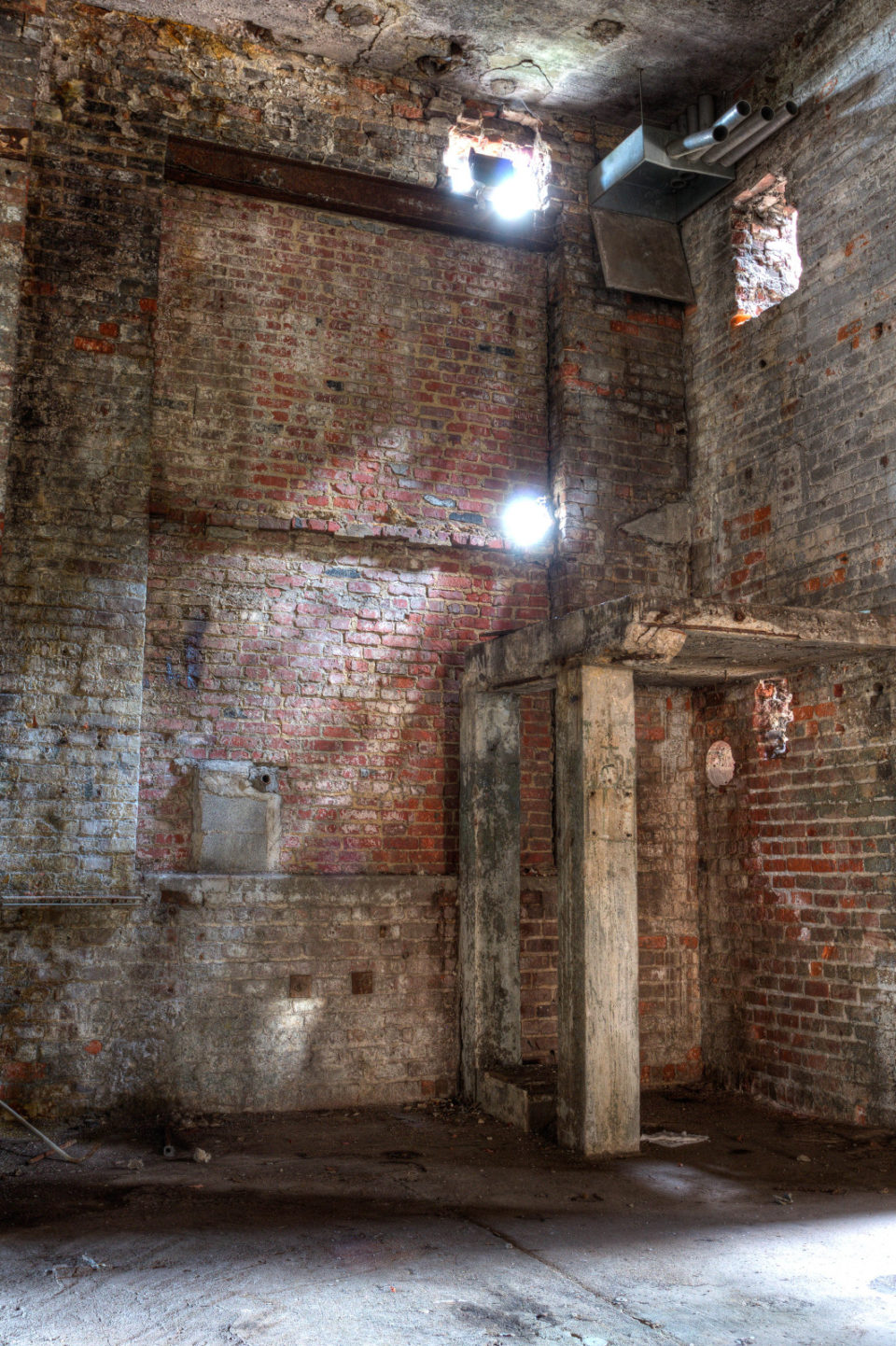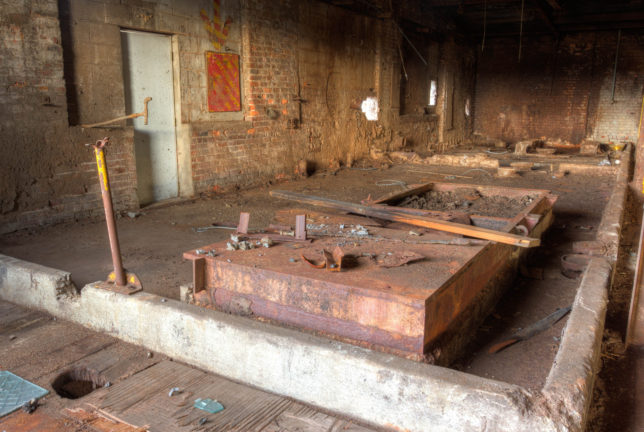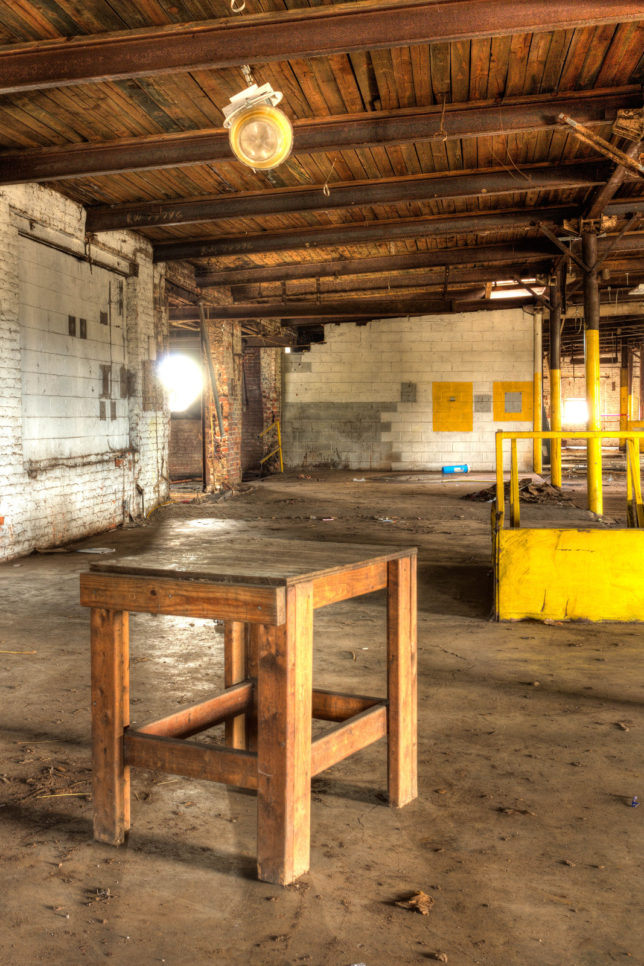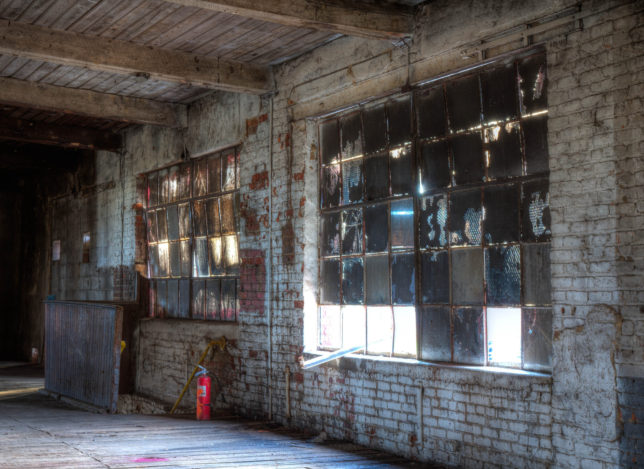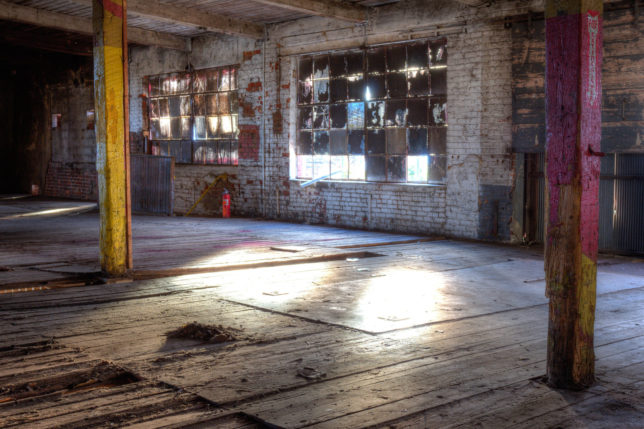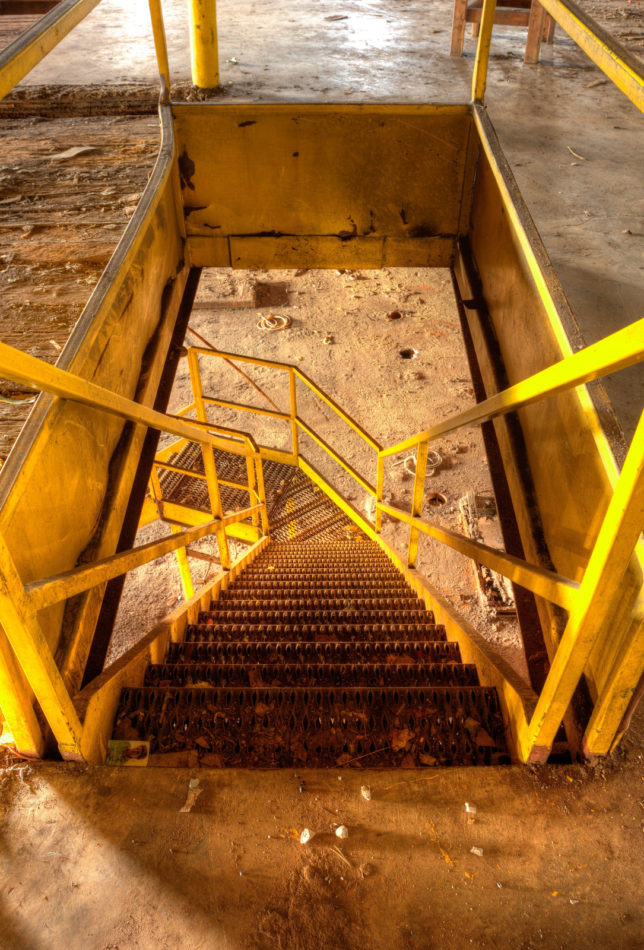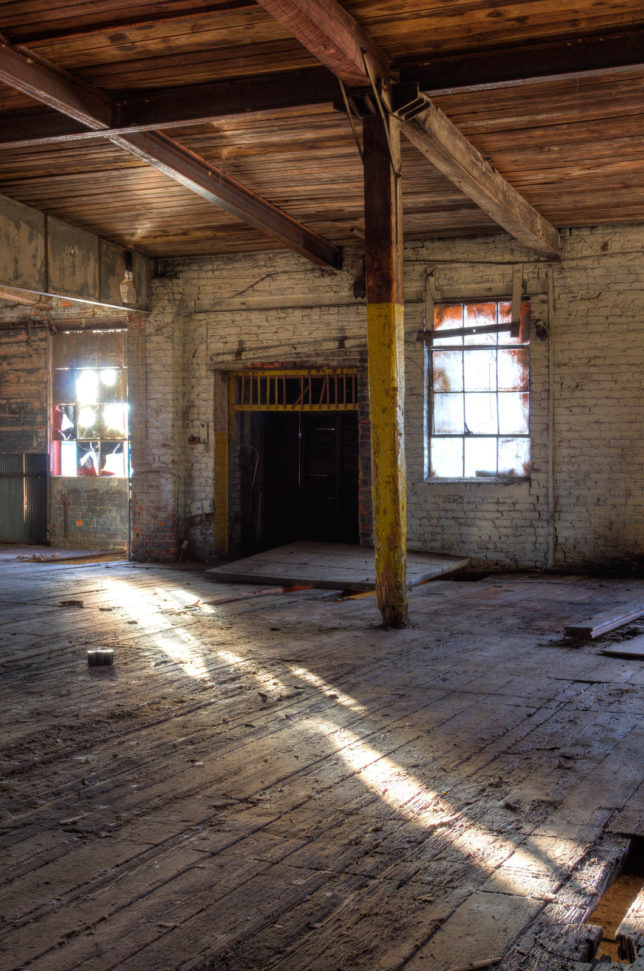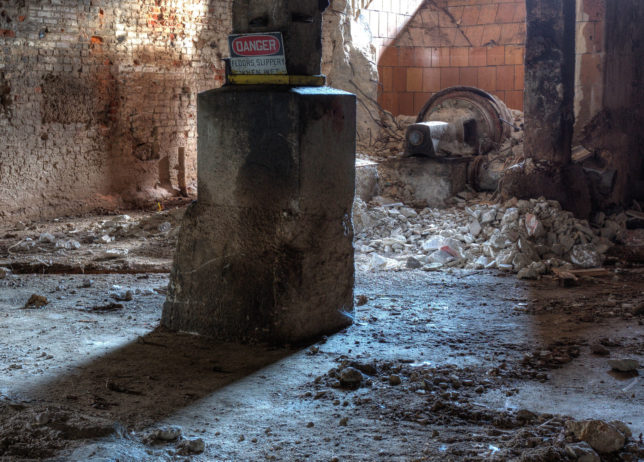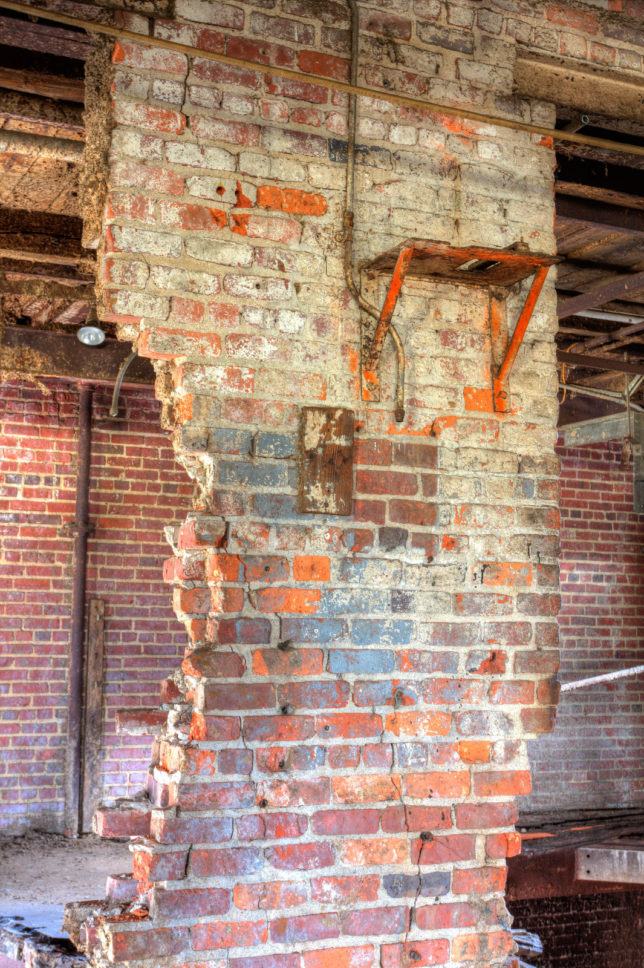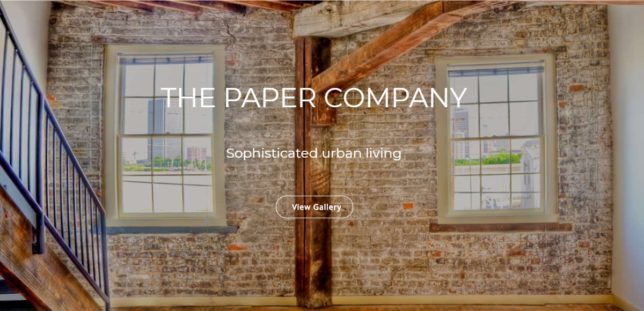A proud chapter in the story of American industry came to a close when an abandoned paper mill in Richmond, VA was re-purposed into loft-style apartments.
Richmond, a city of approximately a quarter-million, is the state capitol of Virginia and the former capitol of the Confederate States of America. Founded in 1737, Richmond has long been a center of economic activity though some of its more traditional industrial pursuits – railroads and tobacco processing, for example – have largely given way to post-industrial profit hubs in the legal, financial and governmental sectors.
Pulp Friction
In 1880, the world’s first cigarette-rolling machine was invented roughly 200 miles west, in Roanoke. One might surmise that this abandoned paper mill, photographed by Joel Handwerk of Lithium Photo, produced rolling paper for the local tobacco firms. Smoke ’em if you got ’em!
That’s just an educated guess, mind you. As the photographer paid a visit to the site long after the mill’s machinery had been removed, actual day-to-day functions at the factory are no longer obvious.
Hard Cover Story
Still, it’s hard to disguise a paper mill. “The overall structures have a layout that is consistent with the manufacturing purpose,” confirms Handwerk, who fortuitously chose to carry out his mission of urbex photo-documentation on a bright, sunny day.
“The upper floors are wide open and feature yellow safety pillars and painted-over window panes,” the photographer adds. Enough natural light does manage to get through, however, while the blacked-out windows provide contrasting shadows and dark backgrounds. Handwerk’s images explode off the monitor screen in a dramatically detailed succession of interior scenic vistas.
The Paper Choice
“The basement level provides access to an area that feels somewhat like catacombs,” mused Handwerk, who presumably escaped the aged structure well before twilight fell and the graveyard shift punched in. A wise move, to be sure – abandoned buildings hide a host of dangers at any hour of the day or night, and it’s not as if anyone’s overseeing what you step onto, into, or off of.
Other hazards urbex hobbyists need to be cognizant of include slick oily floors, rotted wood staircases, loose or missing railings, exposed nails, toxic black mold, unremediated asbestos, and corrosive spilled and/or leaking chemicals just to name a few. Some of those hazards were less obtrusive when Handwerk conducted his photo shoot as the former factory had already been extensively gutted.
Bound and Determined
Kudos to Handwerk for not revealing the building’s name and exact location in Richmond. Sure, graffiti has its place as both an art form and as a valid means of cultural expression but time and time again, graffiti is accompanied by pointless vandalism and destructive metal salvaging. The damage can’t always be attributed to the graffiti artists directly but all too often it occurs in conjunction with their activities.
“This structure is currently being renovated into apartments,” according to Handwerk, quoted from the time he took and posted these images. Residential loft-style apartments now occupy the renovated remains of this former paper mill.
Book Marked
One clue to the former mill’s identity can be found at the Facebook account of The Paper Company Apartments, located on Hull St in Richmond’s Old Town Manchester district. Check out the brickwork in Handwerk’s photo above, and the wall depicted on the front page of Property Results LLC‘s website for The Paper Company Apartments below.
Note the presence of occasional pale blue and orange-tinted bricks common to both images. Coincidence? Perhaps – or perhaps not. In any case, it’s good to see this rough old relic of industrial Richmond make a successful leap from economic engine to residential retreat, hopefully inspiring further efforts at industrial rehabilitation. And that’s a wrap. (all images © 2017 Joel Handwerk)
